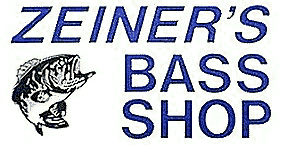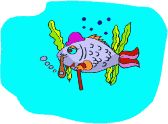 |
See Zeiner's new online
catalog. New items are being added regularly. |
Click here for Zeiners new secure online catalog
Submitted by Ned Kehde - July 29, 2002
Despite the oppressive heat of July hereabouts, the fishing
is often the
most fruitful and varied of the year. In fact, some anglers contend
that
July's consistently hot weather is one reason why the fishing
is so superb.
These anglers explain that anytime the weather is constant for
a long spell,
the fishing is usually good. Conversely, when the weather changes
radically
and frequently, as it often does in the fall and spring, the
fish frequently
become mulish and difficult to entice.
The fishing can be so spectacular in the heat of July that
some anglers
make a game out of matching a heat index of 100 by catching and
releasing
100 fish. For instance in years past, Terry Hinson, an inveterate
crappie
fishermen from Silver Lake, spent July 4th at Perry Lake, probing
brush
piles in 15 feet of water and catching 100 or more big crappie.
Likewise,
Bob Laskey, a bass angler from of Lawrence, often ventured to
farm ponds and
small community lakes on white-hot July days, and as he wielded
four-inch
plastic worms and small jigs, he beguiled 100 or more largemouth
bass.
Even though the crappie and largemouth bass fishing can be
extraordinary
in July, the white bass anglers of northeastern Kansas enjoy
the greatest
bounty.
During July the white bass' diet changes from aquatic insects
and small
crustaceans to small gizzard shad. The white bass also congregate
in large
schools and forage upon schools of shad in 12 to 30 feet of water
on
submerged humps, roadbeds and main-lake points.
For more than 30 Julys, Vic Oertle, a fishing guide from Manhattan,
has
employed jigging spoons on humps, roadbeds and points to allure
untold
numbers of white bass at Milford, Tuttle Creek, Perry, Pomona,
and Melvern
lakes. It's not unheard of for two anglers to catch and release
85 white
bass an hour on one of Oertle's Double W Shad Flutter Spoons,
which he
manufacturers and sells.
When the shad measure less than an inch, a half-ounce spoon
is best, but
as the shad reach two inches in length in late July a three-quarter-ounce
Double W is the ticket.
To catch the white bass in 12 to 17 feet of water on a main-lake
point,
Oertle places his boat on top of 20 feet of water and makes a
long cast,
using a bait-casting outfit spooled with 20-pound test line.
Then he allows
the spoon to fall to the bottom into 10 to 12 feet of water.
As the spoon
falls, his rod is held parallel to the lake's surface. After
the spoon
reaches the bottom, Oertle hops it off the bottom by slowly lifting
his rod
until it's at a 90-degree angle from the lake's surface, and
he holds the
rod in the position until the spoon returns to the bottom. This
slow hop is
continued until the spoon is out of the white bass' lair.
Sometimes the white bass engulf the spoon when it is lying
on the bottom
or as it is being raised off the bottom, but the preponderance
of strikes
come after the spoon reaches the apex of the lift and begins
to fall towards
the bottom.
Upon detecting a strike, Oertle quickly and gently sets the
hook by
lifting the rod and turning the reel handle.
When working a spoon, Oertle says that many novice white bass
anglers tend
impart too much action to the spoon, which often causes the spoon
to become
snagged on boulders and rubble on the bottom of the lake. In
addition, they
often set the hook too hard and reel too fast, which pulls the
spoon out to
the white bass' mouth.
But even novices can catch scads of white bass by employing
one of Oertle's spoons at the right spots at area reservoirs
from now until
mid-September.
Back to
Ned Kehde Index | Kansas
Angler Home | Anglers Sharing Stories
|


